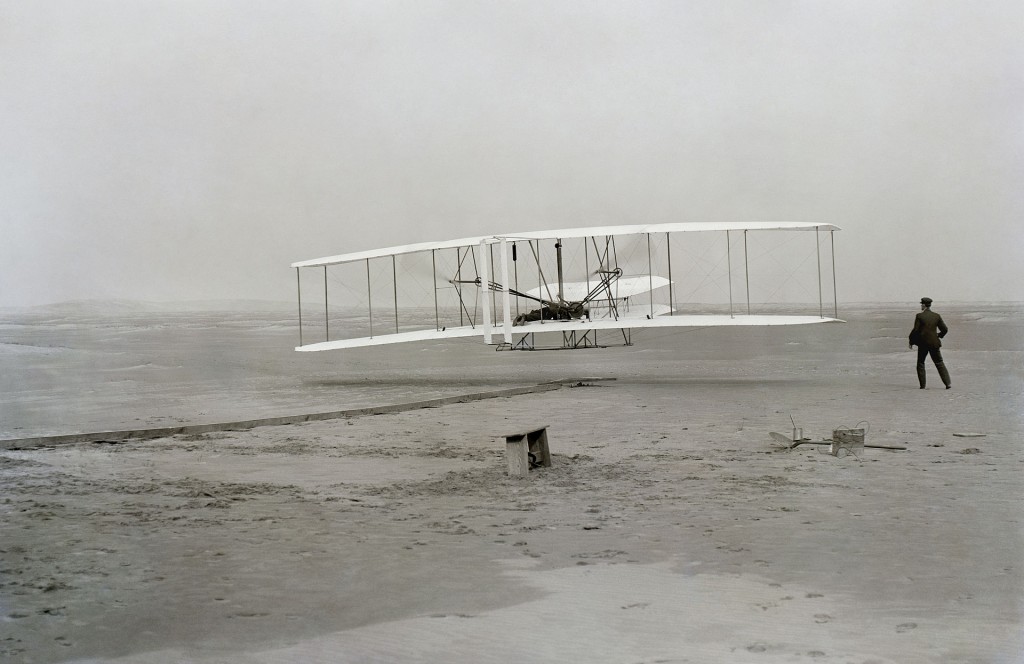Good morning, Whitewater.
Midweek in Whitewater arrives with partly cloudy skies and a high of twenty-nine. Sunrise is 7:20 AM and sunset 4:22 PM for 9h 02m 06s of daytime. The moon is a waning crescent with 22.4% of its visible disk illuminated.
On this day in 1903, the Wright Brothers accomplish a feat never before accomplished in all history, and in so doing deeply influence the course of future events:
The Wright Flyer (often retrospectively referred to as Flyer I or 1903 Flyer) was the first successful heavier-than-air powered aircraft, designed and built by the Wright brothers. They flew it four times on December 17, 1903, near Kill Devil Hills, about four miles south of Kitty Hawk, North Carolina, U.S. Today, the airplane is exhibited in the National Air and Space Museum in Washington D.C.
The U.S. Smithsonian Institution describes the aircraft as “…the first powered, heavier-than-air machine to achieve controlled, sustained flight with a pilot aboard.”[2] The Fédération Aéronautique Internationale described the 1903 flight during the 100th anniversary in 2003 as “the first sustained and controlled heavier-than-air powered flight.”[3]….
Upon returning to Kitty Hawk in 1903, the Wrights completed assembly of the Flyer while practicing on the 1902 Glider from the previous season. On December 14, 1903, they felt ready for their first attempt at powered flight. With the help of men from the nearby government life-saving station, the Wrights moved the Flyer and its launching rail to the incline of a nearby sand dune, Big Kill Devil Hill, intending to make a gravity-assisted takeoff. The brothers tossed a coin to decide who would get the first chance at piloting, and Wilbur won. The airplane left the rail, but Wilbur pulled up too sharply, stalled, and came down in about three seconds with minor damage.
Repairs after the abortive first flight took three days. When they were ready again on December 17, the wind was averaging more than 20 mph, so the brothers laid the launching rail on level ground, pointed into the wind, near their camp. This time the wind, instead of an inclined launch, helped provide the necessary airspeed for takeoff. Because Wilbur already had the first chance, Orville took his turn at the controls. His first flight lasted 12 seconds for a total distance of 120 ft (36.5 m) – shorter than the wingspan of a Boeing 747, as noted by observers in the 2003 commemoration of the first flight.[1][7]
Taking turns, the Wrights made four brief, low-altitude flights that day. The flight paths were all essentially straight; turns were not attempted. Each flight ended in a bumpy and unintended “landing”. The last flight, by Wilbur, was 852 feet (260 m) in 59 seconds, much longer than each of the three previous flights of 120, 175 and 200 feet. The landing broke the front elevator supports, which the Wrights hoped to repair for a possible four-mile (6 km) flight to Kitty Hawk village. Soon after, a heavy gust picked up the Flyer and tumbled it end over end, damaging it beyond any hope of quick repair. It was never flown again.
Google a Day asks a question about biology:
Which phylum of the gymnosperms includes only a single living species?

